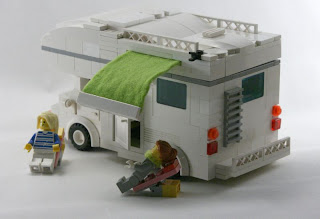These components should allow me to combine some wireless motor action on my arduino in a shield free environment. I'm guessing this is the best way to maximise the use of the pins on the board. I'm in control! Will try to get the soldering of the xbee breakout boards done this week.
Still, I had a brief play with H-Bridge motor drivers which brings me to Fail No 1.
I'm keen to see if I can knock up a remote (internet driven) automated door to our chickens. I got the cheapest electric screwdriver that money can buy from Argos.
£6.99 gets you a motor with suitable gearing, a rechargeable battery pack and charger. Plus you get a handy chuck which should make attachement to a spool easier. Bargain eh? When asked by the friendly Argos sale person if I'd like to take out insurance on the item, I smiled and thanked them and declined. Within 10 minutes of getting it home, I had it in bits and was taping up the gearing to stop it falling apart (again). Warranty violated I fear.
Later on I had a rushed attempt at hooking it up to an H-Bridge and arduino thus:
Feels like I had everything wired up correct but nada from the motor! Seem to be getting all the right voltages across the pins and devices. H-Bridge got very hot so something is happening! Anyway I'll have to come back to it later this week. Might try a capacitor across the motor and check the voltage is sufficient for the H-Bridge etc.
Fail 2 concerned my investigation of xig.
xig is the open source Xbee Internet Gateway initiated by Rob Faludi who wrote the excellent Building Wireless Sensor Networks I have been reading (see previous post).
xig is an easy way to connect Xbee devices to the internet. In short, it will let me switch out any Processing UI I concoct for something available anywhere using HTML etc. You can run it on most platforms (Windows, MacOS and Linux) or you can buy a dedicated device to handle it (a ConnectPort). I'll be content to get it running on my MacOS server.
Anyway, got it installed but it's so far failed to recognise my radio module. I think there are probably 2 reasons possible for this, firstly I'm not using a true Xbee device but an XRF lookylikey - not much I can do about that! Secondly, and this is where I'm hoping the problem lies - I'm yet to configure the radio module to run in API mode. I can do that - yes I can! Well that is if the XRF has an API mode...
More later when I get some time.










